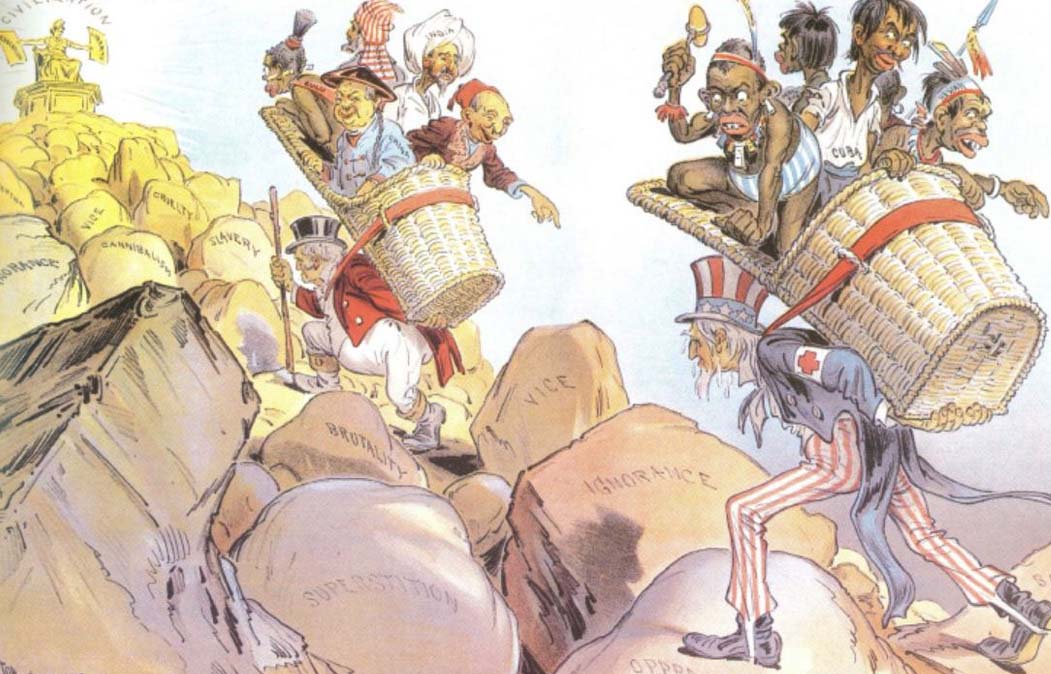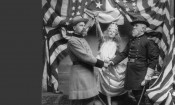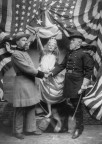
Published the same year as Rudyard Kipling’s “The White Man’s Burden,” this cartoon visually expands upon the poem’s message concerning American imperialism in the Philippines. Here, the personifications of the United States and Britain, Uncle Sam and John Bull, carry baskets strapped on their backs filled with caricatures of the populations living in their recently acquired lands, with Cuba prominently labeled in the United States’ basket. John Bull trudges ahead of Uncle Sam, up boulders that describe the presumed weaknesses of the “uncivilized,” toward a gold representation of “Civilization” at the top. A sweaty Uncle Sam lags behind, struggling to follow in Britain’s footsteps and to assimilate his conquests to white, Anglo-Saxon virtues. Kipling interpreted imperialism as the difficult burden of any powerful, “civilized” nation. If the United States wished to emulate established colonial powers, Kipling believed that control over “uncivilized” peoples in its sphere of influence was necessary, regardless of difficulties that this posed.
Americans professed racial anxiety about new colonial subjects, and whether these populations would be eligible for American citizenship and therefore have influence over the United States’ domestic politics. Cuba, the Philippines, and Puerto Rico all contained racially diverse populations representing indigenous, African, and Asian “stock,” who could also potentially migrate to the United States. These new populations – added to the already large number of new immigrants entering the country from Eastern and Southern Europe at the end of the nineteenth century – represented a perceived threat to the economic, political, and social status quo.
- Rutgers University
Americans professed racial anxiety about new colonial subjects, and whether these populations would be eligible for American citizenship and therefore have influence over the United States’ domestic politics. Cuba, the Philippines, and Puerto Rico all contained racially diverse populations representing indigenous, African, and Asian “stock,” who could also potentially migrate to the United States. These new populations – added to the already large number of new immigrants entering the country from Eastern and Southern Europe at the end of the nineteenth century – represented a perceived threat to the economic, political, and social status quo.
- Rutgers University






